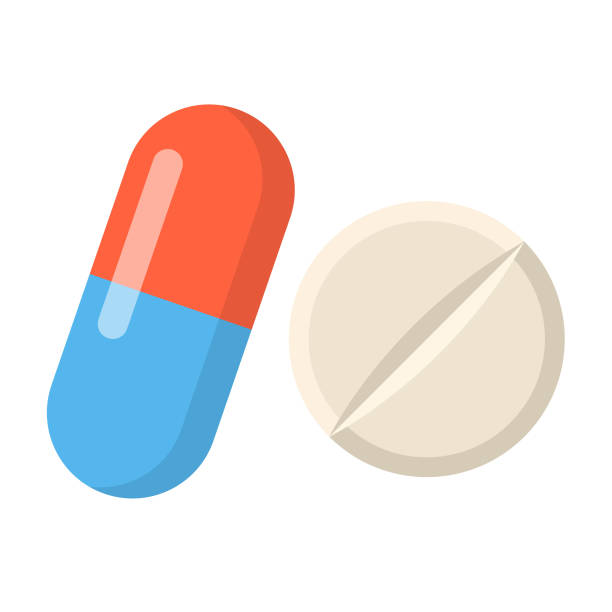Indications
Atorvastatin is indicated as an adjunct to diet to reduce elevated total cholesterol, LDL cholesterol, apolipoprotein B (Apo-B) and triglycerides levels in following diseases when response to diet and other non-pharmacological measures is inadequate.
- To reduce total cholesterol and LDL cholesterol in patients with heterozygous and homozygous familial hypercholesterolaemia.
- To reduce elevated cholesterol and triglycerides in patient with mixed dyslipidemia (Fredrickson Type Ia and Ib).
- For the treatment of patients with elevated serum triglyceride levels in hypertriglyceridaemia (Fredrickson Type IV).
- For the treatment of patients with dysbetalipoproteinaemia (Fredrickson Type III).
- To reduce cardiac ischaemic events in patients with asymptomatic or mild to moderate symptomatic coronary artery disease with elevated LDL-cholesterol level.
- To reduce total and LDL-cholesterol concentrations patients with hypercholesterolemia associated with or exacerbated by diabetes mellitus or renal transplantation.
Pharmacology
Atorvastatin is a selective inhibitor of HMG-CoA reductase. This enzyme is the rate-limiting enzyme responsible for the conversion of HMG-CoA to mevalonate, a precursor of sterols, including cholesterol. Atorvastatin lowers plasma cholesterol and lipoprotein levels by inhibiting HMG-CoA reductase and cholesterol synthesis in the liver and increases the number of hepatic LDL receptors on the cell surface for enhanced uptake and catabolism of LDL.
Dosage And Administration
Primary hypercholesterolaemia and combined hyperlipidaemia-
- Adults: Usually 10 mg once daily; if necessary, may be increased at intervals of at least 4 weeks to max. 80 mg once daily.
- Child (10-18 years): Initially 10 mg once daily, increased if necessary at intervals of at least 4 weeks to usual max. 20 mg once daily.
Familial hypercholesterolaemia-
- Adults: Initially 10 mg daily, increased at intervals of at least 4 weeks to 40 mg once daily; if necessary, further increased to max. 80 mg once daily (or 40 mg once daily combined with anion-exchange resin in heterozygous familial hypercholesterolaemia).
- Child (10-18 years): Initially 10 mg once daily, increased if necessary at intervals of at least 4 weeks to usual max. 80 mg once daily.
Prevention of cardiovascular events-
- Adults: Initially 10 mg once daily adjusted according to response.
Interaction
The risk of myopathy during treatment with Atorvastatin is increased with concurrent administration of cyclosporin, fibric acid derivatives, erythromycin, azole antifungals and niacin. No clinically significant interactions were seen when Atorvastatin was administered with antihypertensives or hypoglycemic agents. Patients should be closely monitored if Atorvastatin is added to digoxin, erythromycin, oral contraceptives, colestipol, antacid and warfarin.
Contraindications
Atorvastatin should not be used in patient with hypersensitivity to any component of this medication. Atorvastatin is contraindicated in active liver disease or unexplained persistent elevations of serum transaminases. It is also contraindicated in patient with history of serious adverse reaction to prior administration of HMG-CoA reductase inhibitors.
Side Effects
Atorvastatin is generally well-tolerated. The most frequent side effects related to Atorvastatin are constipation, flatulence, dyspepsia, abdominal pain. Other side effects includes infection, headache, back pain, rash, asthenia, arthralgia, myalgia.
Pregnancy And Lactation
Pregnancy: Atorvastatin is contraindicated during pregnancy. Safety in pregnant women has not been established. No controlled clinical trials with atorvastatin have been conducted in pregnant women. Rare reports of congenital anomalies following intrauterine exposure to HMG-CoA reductase inhibitors have been received. Animal studies have shown toxicity to reproduction. Maternal treatment with atorvastatin may reduce the fetal levels of mevalonate which is a precursor of cholesterol biosynthesis. Atorvastatin should not be used in women who are pregnant, trying to become pregnant or suspect they are pregnant. Treatment with atorvastatin should be suspended for the duration of pregnancy or until it has been determined that the woman is not pregnant
Lactation: It is not known whether atorvastatin or its metabolites are excreted in human milk. In rats, plasma concentrations of atorvastatin and its active metabolites are similar to those in milk. Because of the potential for serious adverse reactions, women taking atorvastatin should not breastfeed their infants. Atorvastatin is contraindicated during breastfeeding.
Precautions And Warnings
Liver effects: Liver function tests should be performed before the initiation of treatment and periodically thereafter. Atorvastatin should be used with caution in patients who consume substantial quantities of alcohol or have a history of liver disease. Atorvastatin therapy should be discontinued if markedly elevated CPK levels occur or myopathy is diagnosed or suspected.
Overdose Effects
Specific treatment is not available for atorvastatin overdose. The patient should be treated symptomatically and supportive measures instituted, as required. Liver function tests should be performed and serum CK levels should be monitored. Due to extensive atorvastatin binding to plasma proteins, hemodialysis is not expected to significantly enhance atorvastatin clearance.
Therapeutic Class
Anti-anginal & Anti-ischaemic Drugs, Statins
Use in special populations
Hepatic impairment: Atorvastatin should be used with caution in patients with hepatic impairment.
Pediatric use: For patients aged 10 years and above, the recommended starting dose of atorvastatin is 10 mg per day with titration up to 20 mg per day. Atorvastatin is not indicated in the treatment of patients below the age of 10 years.
Storage Conditions
Keep in a dry place away from light and heat. Keep out of the reach of children.
